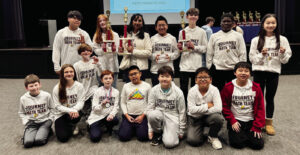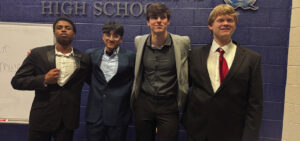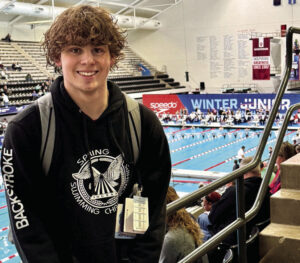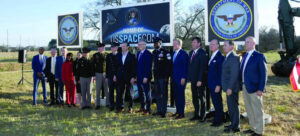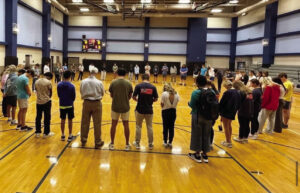Young students learn coding basics to solve problems
MADISON – Young students in elementary grades of Madison City Schools apply STEM principles to use coding to solve problems.
During their weekly STEM class, these students learn about coding and other digital literacy skills.
Teachers have used a generous grant from Leidos to equip each STEM classroom with a class set of micro:bits, which students can code to assist in creating a simple computer program with straight-forward commands, according to STEM teacher Megan Hockey.
The micro:bit is a pocket- sized computer that introduces students to the way that software and hardware work together. A micro:bit has an LED light display, buttons, sensors and many input/ output features that the user can program and interact with physically. The latest micro:bit adds sound-sensing and playback capabilities.
A micro:bit is designed to enable children to get engaged and creative with technology and coding – even children who thought they weren’t suited to tech.
After students learn how the micro:bit is coded, they receive a challenge while incorporating the micro:bits to help solve a given problem. For example, third-graders wrote, tested and debugged a program that created a virtual snow globe.
Teachers assign lessons from easy projects, such as making name tags. Tackling more complex coding, third-graders programmed micro:bits to simulate a snowball fight. They coded the micro:bits so that when shaken, the word “snowball” was sent on a radio group, clearing the LED screen of the initiating micro:bit.
Simultaneously, another micro:bit received the radio signal and displayed a snowflake icon that the students had coded. This scenario allowed students to send the code across the classroom and down the hallways, creating an engaging and interactive experience, Hockey said.
Throughout the lesson, students discussed ways that they might use coding skills in various STEM careers.
“Our STEM program provides our students with this safe space to grapple with concepts, take risks and work through the problem- solving process. As an educator, it’s exciting to have an opportunity to provide students with authentic experiences that mirror the real world or actually connect with our community,” Hockey said.
“One of the best parts of being a STEM teacher is guiding students through hands-on projects where they can connect abstract concepts to tangible outcomes — whether it is programming a microcontroller, building a rollercoaster or creating circuits,” Hockey said.
“It’s amazing to witness the moment students realize they can transform an idea into reality or (learn to) adapt when an idea fails to solve the problem,” Hockey said. “Furthermore, it’s exciting to see how much students genuinely love STEM; their enthusiasm and engagement are contagious, inspiring the Madison City STEM team to continuously create meaningful learning experiences.”






